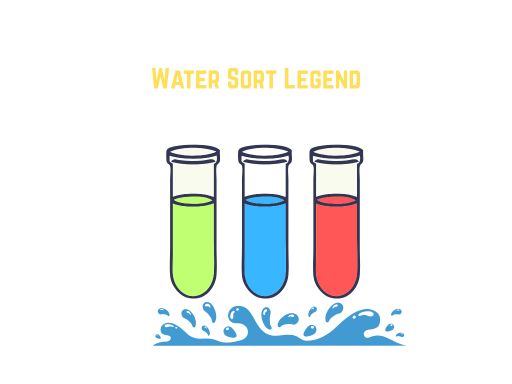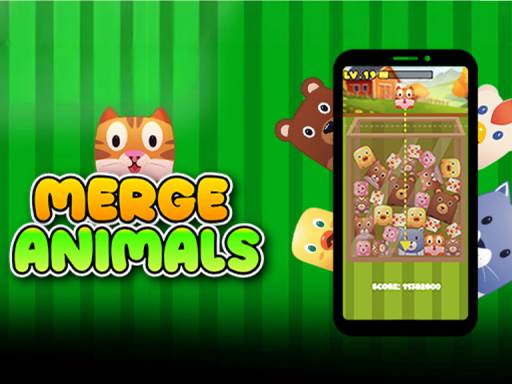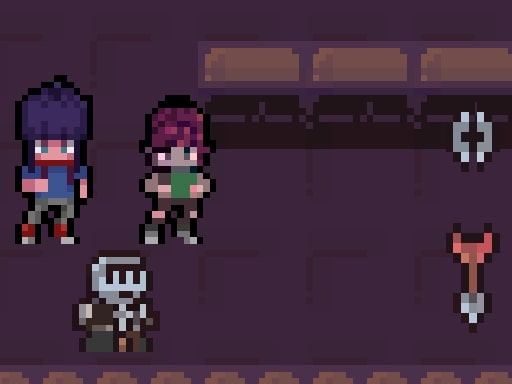Kaleidoscope Pie Magic
About Kaleidoscope Pie Magic
Oh man, you are *not* going to believe what I stumbled upon. Seriously, you know how I’m always on the hunt for those games that just… click? The ones that grab you and don't let go, where you look up and suddenly three hours have vanished? Well, I found one. And it's called "Kaleidoscope Pie Magic," and honestly, the name doesn't even begin to do it justice, but it's got that whimsical vibe that just hints at the delightful mental workout you're in for.
I know, I know, "photo puzzle game" might not sound like the most adrenaline-pumping description, but hear me out. Forget everything you think you know about those basic tile-swapping things. This is *different*. This is... meditative, challenging, and incredibly, profoundly satisfying in a way that very few games manage to be. It's not about speed, it's not about high scores, it's about that pure, unadulterated joy of seeing order emerge from chaos, of a beautiful image slowly revealing itself under your guidance.
From the moment you load it up, there’s this immediate sense of calm. The interface is clean, elegant, no flashy distractions. Just the promise of a puzzle. And then you see it: a round picture, right there in the center of your screen, but it’s utterly scrambled. Not in squares, though, which is what makes it so brilliant. No, this picture is broken into a multitude of perfect, radial, pie-shaped pieces. Imagine a pizza that’s been sliced a hundred times, and then someone just spun all the slices around. That’s what you’re looking at.
What I love about games like this is that initial moment of almost overwhelming complexity. You stare at it, and your brain just kind of short-circuits for a second. Where do you even begin? It’s a riot of colors and shapes, a dizzying array of fragments that *almost* connect, but not quite. You can almost feel the tension in your shoulders as your eyes dart around, trying to find a starting point, a familiar edge, a hint of what the original image might have been. And that's where the magic truly begins.
The core mechanic is deceptively simple, which is often the hallmark of brilliant game design, right? You just swipe with your finger or mouse, and two adjacent pie pieces swap places. That’s it. No complicated combos, no power-ups, no timers breathing down your neck. Just you, the scrambled image, and the gentle, rhythmic act of swapping. But oh, the depth that simple action unlocks!
You start with the edges, naturally. Or at least, I do. There’s something incredibly satisfying about finding two pieces that form a perfect curve, or a clear line that extends outwards. You nudge one piece, then another, and suddenly, a small segment of the original picture starts to emerge. Maybe it’s a sliver of a blue sky, or the curve of a petal, or a hint of a distant mountain. And that’s when you feel that first little spark of hope, that first rush of understanding. "Aha!" you think, "I know where this is going."
But then, just as you get comfortable, the difficulty ramps up in the most subtle, brilliant ways. You see, it’s not always about obvious color matches. Sometimes, the pieces are so similar, the shades so nuanced, that you have to look for the *texture*, the *pattern*, the way a tiny shadow falls across a surface. You find yourself squinting at the screen, leaning in closer, almost willing the pieces to tell you where they belong. And that’s when you really get absorbed. You forget about the world outside, about the time, about whatever else you were supposed to be doing. You’re just in this beautiful, circular world of fragmented images, trying to put it all back together.
There’s something genuinely magical about the way the game unfolds. You’ll find yourself developing a strategy without even realizing it. Maybe you focus on the center first, or perhaps you try to build out from a distinct corner. I personally like to find a really unique color or shape, something that stands out, and try to anchor it. Then I’ll work outwards from there, like ripples in a pond. The brilliant thing about this is that there's no single "right" way to solve it. Each puzzle feels like a unique challenge, demanding a fresh approach, a new way of seeing.
The real magic happens when you get into that flow state. You know that feeling, right? When your brain is just firing on all cylinders, and your hands are moving almost instinctively. You’re not consciously thinking "I need to swap this piece with that one." It’s more like your eyes identify a potential connection, and your finger just *goes*. The pieces slide smoothly, a soft click sound accompanying each successful swap, and you can almost feel the gears in your mind turning, locking into place. It’s a symphony of visual and mental satisfaction.
And the pictures themselves! They’re stunning. Seriously, they range from breathtaking landscapes and vibrant cityscapes to intricate close-ups of flowers or fascinating abstract patterns. Each one is a little work of art, and the process of restoring it feels like you're a curator, carefully piecing together a masterpiece. Just wait until you encounter a puzzle that’s mostly a uniform color, like a vast ocean or a clear sky. That’s when it truly tests your patience and your eye for detail. You’re looking for the most minuscule shift in hue, the slightest variation in light, to guide your swaps. The satisfaction of nailing those difficult ones? Oh, it’s immense. It’s that deep, resonant "click" in your brain that says, "Yes. I did that."
I’ve always been drawn to games that reward observation and patience, games that make you feel smarter for having played them. And Kaleidoscope Pie Magic absolutely delivers on that. In my experience, the best moments come when you’ve been stuck on a particularly stubborn section for a while, maybe you’ve tried every permutation you can think of, and then, suddenly, a different piece just *jumps* out at you. You swap it, and it unlocks a cascade of other connections. It’s like the whole picture suddenly breathes, and you see the solution unfold before your eyes. That moment of realization, that breakthrough, it’s just pure dopamine.
This makes me wonder about the artists who create these images, and the designers who figured out how to slice them up in such a compelling way. What's interesting is how some pieces, when they’re out of place, look utterly meaningless, just a jumble of colors. But then you slide them into their correct position, and they suddenly gain context, becoming an indispensable part of a larger whole. It's a beautiful metaphor, honestly, for how small, seemingly insignificant parts contribute to something grand and beautiful.
You know that feeling when you're so absorbed in a game that you lose track of time? I've had entire evenings vanish into this game. I'll start one puzzle, thinking "just five more minutes," and then I'll look at the clock and realize it's past midnight. It's not a frantic, heart-pounding loss of time, though. It's a peaceful, focused immersion. You emerge from it feeling calm, accomplished, and strangely refreshed, like your brain just got a really good, satisfying workout.
It’s not just about solving the puzzle, either. It’s about the journey. It’s about appreciating the beauty of the fragmented image, the subtle interplay of colors and lines, even when it’s all jumbled up. And then, the ultimate reward: seeing the complete, pristine image, knowing that *you* were the one who brought it back to life. It’s a quiet triumph, but a powerful one.
So yeah, "Kaleidoscope Pie Magic." It’s not a blockbuster, it’s not going to win any esports tournaments, but it’s one of those hidden gems that just resonates. If you're looking for something that's genuinely captivating, that challenges your mind in a gentle but persistent way, and that offers that deep, satisfying sense of accomplishment, you absolutely have to check this out. Seriously, you'll thank me later. It’s a little slice of gaming heaven, pun absolutely intended.
I know, I know, "photo puzzle game" might not sound like the most adrenaline-pumping description, but hear me out. Forget everything you think you know about those basic tile-swapping things. This is *different*. This is... meditative, challenging, and incredibly, profoundly satisfying in a way that very few games manage to be. It's not about speed, it's not about high scores, it's about that pure, unadulterated joy of seeing order emerge from chaos, of a beautiful image slowly revealing itself under your guidance.
From the moment you load it up, there’s this immediate sense of calm. The interface is clean, elegant, no flashy distractions. Just the promise of a puzzle. And then you see it: a round picture, right there in the center of your screen, but it’s utterly scrambled. Not in squares, though, which is what makes it so brilliant. No, this picture is broken into a multitude of perfect, radial, pie-shaped pieces. Imagine a pizza that’s been sliced a hundred times, and then someone just spun all the slices around. That’s what you’re looking at.
What I love about games like this is that initial moment of almost overwhelming complexity. You stare at it, and your brain just kind of short-circuits for a second. Where do you even begin? It’s a riot of colors and shapes, a dizzying array of fragments that *almost* connect, but not quite. You can almost feel the tension in your shoulders as your eyes dart around, trying to find a starting point, a familiar edge, a hint of what the original image might have been. And that's where the magic truly begins.
The core mechanic is deceptively simple, which is often the hallmark of brilliant game design, right? You just swipe with your finger or mouse, and two adjacent pie pieces swap places. That’s it. No complicated combos, no power-ups, no timers breathing down your neck. Just you, the scrambled image, and the gentle, rhythmic act of swapping. But oh, the depth that simple action unlocks!
You start with the edges, naturally. Or at least, I do. There’s something incredibly satisfying about finding two pieces that form a perfect curve, or a clear line that extends outwards. You nudge one piece, then another, and suddenly, a small segment of the original picture starts to emerge. Maybe it’s a sliver of a blue sky, or the curve of a petal, or a hint of a distant mountain. And that’s when you feel that first little spark of hope, that first rush of understanding. "Aha!" you think, "I know where this is going."
But then, just as you get comfortable, the difficulty ramps up in the most subtle, brilliant ways. You see, it’s not always about obvious color matches. Sometimes, the pieces are so similar, the shades so nuanced, that you have to look for the *texture*, the *pattern*, the way a tiny shadow falls across a surface. You find yourself squinting at the screen, leaning in closer, almost willing the pieces to tell you where they belong. And that’s when you really get absorbed. You forget about the world outside, about the time, about whatever else you were supposed to be doing. You’re just in this beautiful, circular world of fragmented images, trying to put it all back together.
There’s something genuinely magical about the way the game unfolds. You’ll find yourself developing a strategy without even realizing it. Maybe you focus on the center first, or perhaps you try to build out from a distinct corner. I personally like to find a really unique color or shape, something that stands out, and try to anchor it. Then I’ll work outwards from there, like ripples in a pond. The brilliant thing about this is that there's no single "right" way to solve it. Each puzzle feels like a unique challenge, demanding a fresh approach, a new way of seeing.
The real magic happens when you get into that flow state. You know that feeling, right? When your brain is just firing on all cylinders, and your hands are moving almost instinctively. You’re not consciously thinking "I need to swap this piece with that one." It’s more like your eyes identify a potential connection, and your finger just *goes*. The pieces slide smoothly, a soft click sound accompanying each successful swap, and you can almost feel the gears in your mind turning, locking into place. It’s a symphony of visual and mental satisfaction.
And the pictures themselves! They’re stunning. Seriously, they range from breathtaking landscapes and vibrant cityscapes to intricate close-ups of flowers or fascinating abstract patterns. Each one is a little work of art, and the process of restoring it feels like you're a curator, carefully piecing together a masterpiece. Just wait until you encounter a puzzle that’s mostly a uniform color, like a vast ocean or a clear sky. That’s when it truly tests your patience and your eye for detail. You’re looking for the most minuscule shift in hue, the slightest variation in light, to guide your swaps. The satisfaction of nailing those difficult ones? Oh, it’s immense. It’s that deep, resonant "click" in your brain that says, "Yes. I did that."
I’ve always been drawn to games that reward observation and patience, games that make you feel smarter for having played them. And Kaleidoscope Pie Magic absolutely delivers on that. In my experience, the best moments come when you’ve been stuck on a particularly stubborn section for a while, maybe you’ve tried every permutation you can think of, and then, suddenly, a different piece just *jumps* out at you. You swap it, and it unlocks a cascade of other connections. It’s like the whole picture suddenly breathes, and you see the solution unfold before your eyes. That moment of realization, that breakthrough, it’s just pure dopamine.
This makes me wonder about the artists who create these images, and the designers who figured out how to slice them up in such a compelling way. What's interesting is how some pieces, when they’re out of place, look utterly meaningless, just a jumble of colors. But then you slide them into their correct position, and they suddenly gain context, becoming an indispensable part of a larger whole. It's a beautiful metaphor, honestly, for how small, seemingly insignificant parts contribute to something grand and beautiful.
You know that feeling when you're so absorbed in a game that you lose track of time? I've had entire evenings vanish into this game. I'll start one puzzle, thinking "just five more minutes," and then I'll look at the clock and realize it's past midnight. It's not a frantic, heart-pounding loss of time, though. It's a peaceful, focused immersion. You emerge from it feeling calm, accomplished, and strangely refreshed, like your brain just got a really good, satisfying workout.
It’s not just about solving the puzzle, either. It’s about the journey. It’s about appreciating the beauty of the fragmented image, the subtle interplay of colors and lines, even when it’s all jumbled up. And then, the ultimate reward: seeing the complete, pristine image, knowing that *you* were the one who brought it back to life. It’s a quiet triumph, but a powerful one.
So yeah, "Kaleidoscope Pie Magic." It’s not a blockbuster, it’s not going to win any esports tournaments, but it’s one of those hidden gems that just resonates. If you're looking for something that's genuinely captivating, that challenges your mind in a gentle but persistent way, and that offers that deep, satisfying sense of accomplishment, you absolutely have to check this out. Seriously, you'll thank me later. It’s a little slice of gaming heaven, pun absolutely intended.
Enjoy playing Kaleidoscope Pie Magic online for free on Colosm. This Puzzle game offers amazing gameplay and stunning graphics. No downloads required, play directly in your browser!
How to Play
Click and hold or swipe your finger on a pie piece then drag to an adjacent piece to swap them Keep swapping until you complete the round photo





Comments
This game is awesome! I love the graphics and gameplay.
One of the best games I've played recently. Highly recommended!